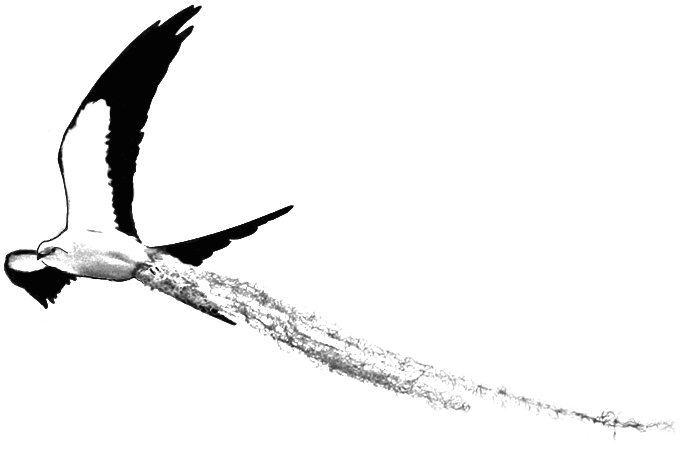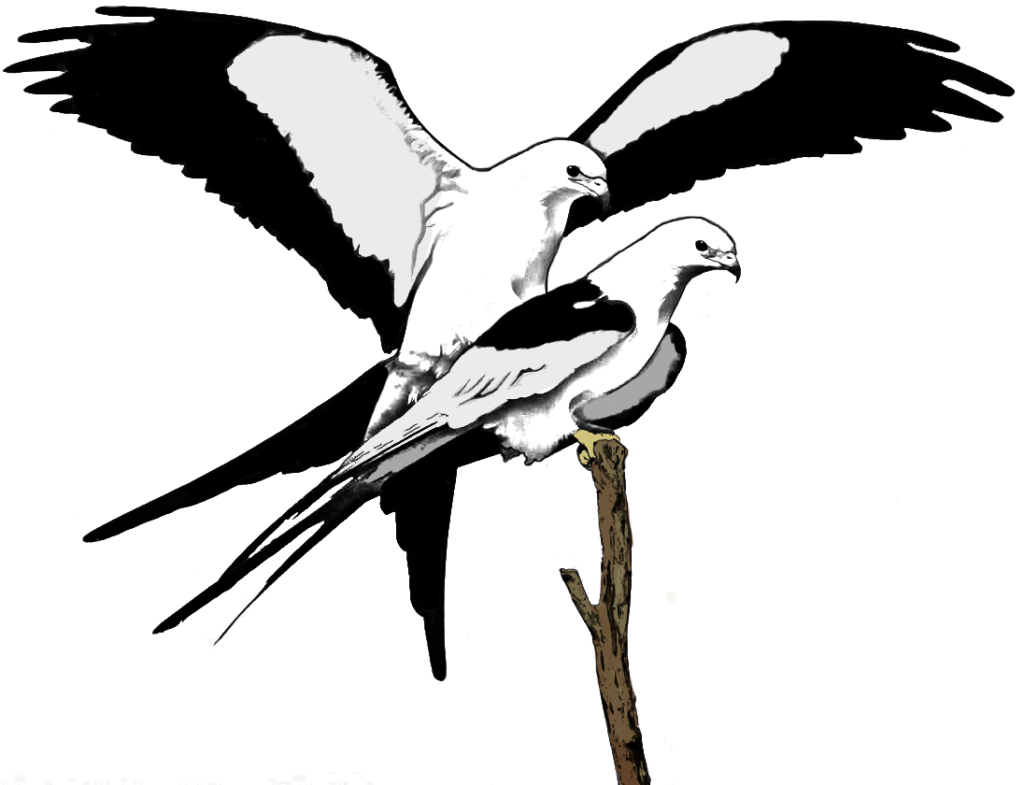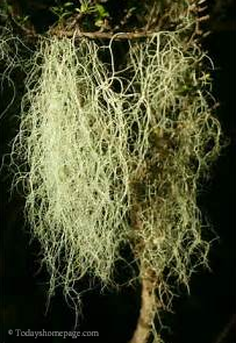If you are regularly hearing or seeing Swallow-tailed Kites in your area, there may be a nest nearby. Their nesting season starts late February/early March, after the birds return from their winter ranges in South America. Swallow-tailed Kites are most conspicuous when they are building a nest and then again when they are feeding chicks in late May and June. One way to find a nest is to observe the behavior of the birds, and let them lead you to it. Early in the nesting season (late February to mid-April), look and listen for the Three C’s:
Courtship

Listen for kites calling to each other. Look for birds in a “dive-chase” or making “flutter dives.” Males also carry food items like snakes, lizards, or frogs to present to the females.
Construction

Look for kites carrying sticks, Old Man’s Beard (light green lichen) or Spanish Moss in their talons or beaks. Follow in the direction the kite is flying, it may take you directly to the nest. If the kite carrying material switches it from its feet to its bill, it’s getting ready to land, and probably in a nest!
Copulation

This is a sure sign a nest is nearby. You may hear a perched female calling to her partner, and the male may bring the female a food gift (snake, frog, anole) just before a copulation.
Tips:

- The best time to find nests is in the morning when the kites are most active.
- Use your binoculars or spotting scope and scan the tops of the trees around you. Look for a “ball” by the trunk of the tree. The nest will always consist of Spanish Moss and often the bright, sea-foam green lichen called Old Man’s Beard.
- Finding nests can be more difficult during incubating. The best opportunity you have to find the nest during this time is to watch for a food delivery or incubation exchange by the partner.
- When the chicks hatch, both adults will be making daily, repeated trips to the nest with food. The chicks can be heard begging as the adults approach the nest.
- If adult kites start calling at you, you are likely very near a nest. This is your cue to back away to let the kites calm down. Then observe the area from a distance to see if the kites return to one tree in particular.
